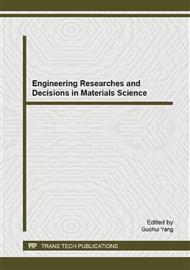p.63
p.69
p.75
p.80
p.86
p.92
p.98
p.104
p.110
Preparation of Y-Doped BaZrO3 Proton Conducting Solid Electrolyte via Modified Low Temperature Pechini Method
Abstract:
One of the promising material for proton-conducting solid electrolyte operating at intermediate temperature range (400-600 °C) is the Yttrium-doped BaZrO3 (BZY) due to its high conductivity and chemical stability. In this study, a modified citrate-nitrate combustion method (Pechini method) has been employed for BZY powder preparation. A stoichiometric amounts of starting nitrates and oxide raw materials with nitric acid, citric acid and ethylene glycol for the synthesis of 20 mol% Y-doped BaZrO3 (BZY20) were prepared, then calcined and sintered at 1000 °C for two heat treatment durations of 24 hours and 48 hours. The obtained BZY20 powder samples have been fully characterized for its structure, morphology, and thermal properties. From the X-ray diffraction (XRD) results, the sample sintered for 48 hours showed a cubic phase of BZY20 which can be indexed to a Pm3m cubic structure which is also supported by Raman analysis. The calculated lattice parameter is 4.2067 Å which is higher than the reported lattice parameter of a pure BaZrO3 (BZ) of 4.1930 Å which indicates a successful doping due to higher ionic radius of Y3+ dopant as compared to Zr4+ in the B-site ABO3 perovskite sub-lattice. In addition, SEM-EDX analyses of the sintered pellet revealed a uniform distribution of Yttrium dopant in the BZY20 prepared solid electrolyte.
Info:
Periodical:
Pages:
86-91
Citation:
Online since:
April 2015
Authors:
Price:
Сopyright:
© 2015 Trans Tech Publications Ltd. All Rights Reserved
Share:
Citation:


